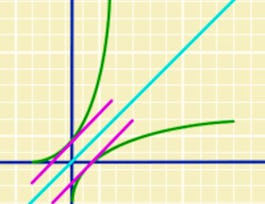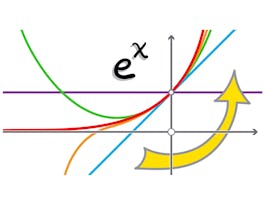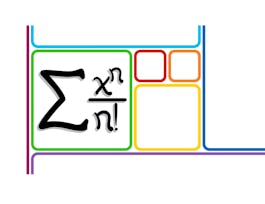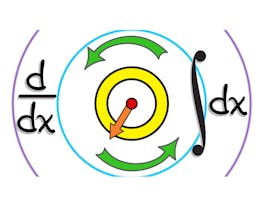This course "Introduction to Advanced Calculus" is a natural sequel to the course "Introduction to Calculus", also on this platform, though students who are well-prepared, with some prior calculus experience, can jump straight in. Once again, the focus and themes of this course address important foundations for applications of mathematics in science, engineering and commerce, with now a particular focus on series representations of functions and an introduction to the theory of differential equations. The course emphasises key ideas and historical motivation for calculus, while at the same time striking a balance between theory and application, leading to a mastery of key threshold concepts in foundational mathematics.



Details to know

Add to your LinkedIn profile
28 assignments
September 2024
See how employees at top companies are mastering in-demand skills


Earn a career certificate
Add this credential to your LinkedIn profile, resume, or CV
Share it on social media and in your performance review

There are 4 modules in this course
This module begins by reviewing limit definitions of the derivative, looking in depth at underlying results and principles such as the Mean Value Theorem and the Intermediate Value Theorem, leading to methods for finding approximate solutions of equations. New techniques are introduced, such as L'Hopital's Rule for finding difficult limits and the lightning fast Newton's Method for homing in on roots of equations. The module finishes by adding hyperbolic functions to the toolkit, complementing existing knowledge of circular functions.
What's included
13 videos8 readings7 assignments
This module begins by reviewing areas under curves, the method of Riemann sums, leading to definite integrals, and the Fundamental Theorem of Calculus, leading to indefinite integrals. It then reviews integration by substitution, including difficult examples, and revisits logarithms and exponentials and their properties, using the constructive late transcendental method (compared with the existential early transcendental method). The module then introduces the method of integration by parts and the method of partial fractions, including a sketch of underlying related principles from linear algebra. The module then introduces the disc and shell methods for finding volumes of revolution, formulae for finding surface areas of revolutions, related to arc length, and the concept of work from physics. The module finishes with an introduction to improper integrals, their many variations and contrasting techniques, including a discussion of the painter's paradox, involving Torricelli's trumpet, which has a finite volume but infinite surface area.
What's included
17 videos10 readings9 assignments
This third module begins by reviewing concepts related to sequences, including the Monotone Convergence Theorem, which is used frequently to guarantee convergence of limits and series under certain conditions. The module then introduces series, which are sums of sequences, which go on forever, and defined formally as limits of partial sums, which may or may not converge. Geometric, harmonic and alternating harmonic series are introduced, leading to the Ratio Test and the Alternating Test for convergence. Power series representations are introduced, including explicit formulae for Taylor and Maclaurin series, in terms of iterated derivatives and factorials. Important functions, such as exponential, logarithmic, circular and hyperbolic functions, are analysed, compared and contrasted, from the point of view of series representations. Approximations of functions are studied using Taylor and Maclaurin polynomials, which result by truncating the respective infinite series. This leads to Taylor's Theorem, which enables one to control the quality of the approximation and make predictions using a remainder term. The method is also used to prove Euler's number e is irrational and that the alternating harmonic series converges to the natural logarithm of 2.
What's included
11 videos5 readings6 assignments
This fourth and final module serves as an introduction to the vast theory of differential equations. It begins with the class of separable equations, generalising the simplest cases where the derivative of a function is proportional to the value of the function, used to model exponential growth and decay. Introducing an inhibition or death factor, leads to the logistic equation and its solution, the logistic function, used to model wide ranging phenomena in science and population dynamics. A discussion of equilibrium solutions and their stability ensues. The module then considers a class of first order linear differential equations, which may be solved using an integrating factor method, an instance of the Conjugation Principle, used widely in mathematics to solve difficult problems or avoid obstacles. The module then considers second order equations with constant coefficients, which have solution spaces that are two-dimensional, analogous to planes in space. The module finishes with an introduction to solutions of systems of equations, which model interacting populations, in a symbiotic or predator-prey relationship, including a brief overview of connections with concepts in linear algebra and the matrix exponential.
What's included
11 videos6 readings6 assignments
Instructor

Offered by
Why people choose Coursera for their career




Recommended if you're interested in Math and Logic

The University of Sydney

University of Pennsylvania

University of Pennsylvania

University of Pennsylvania

Open new doors with Coursera Plus
Unlimited access to 10,000+ world-class courses, hands-on projects, and job-ready certificate programs - all included in your subscription
Advance your career with an online degree
Earn a degree from world-class universities - 100% online
Join over 3,400 global companies that choose Coursera for Business
Upskill your employees to excel in the digital economy


